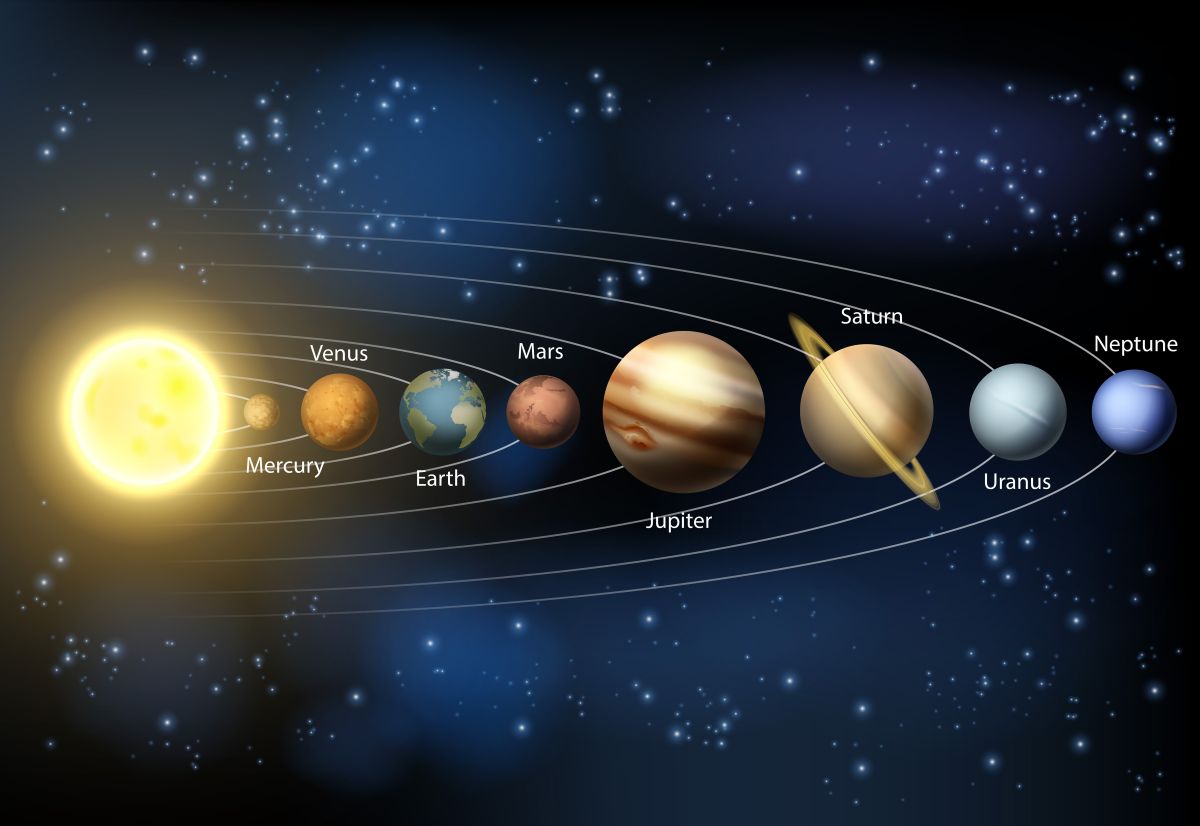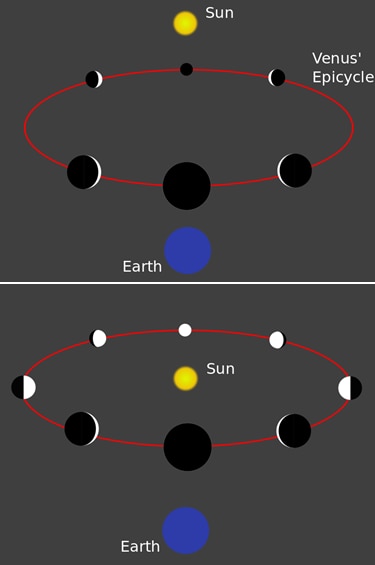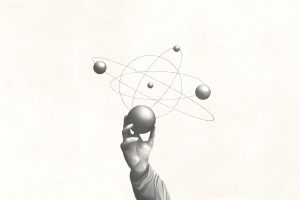
© Shutterstock
In the previous edition, we focused on the European Renaissance and examined how Islamic astronomers influenced science to evolve in this direction. In this edition we cover the works of Brahe, Kepler, Galileo and Newton, all of whom significantly contributed to our understanding of the universe. Did they make isolated discoveries, or did Islamic science contribute to this stage of astronomy?
Copernicus had set the foundation stone for the European Renaissance. By reformulating the wandering stars to circle the sun, humanity had put one foot into the modern age. The first nail in the coffin of Aristotelian physics was struck. Over the next 200 or so years, Brahe, Kepler, Galileo and Newton would follow him, until the enigma of the wandering stars was resolved and the world would be ushered into a new era.
Brahe (1546-1601)
In the year 1572 a bright new ‘star’ shone across the sky. This was actually the sight of a star exploding – a supernova. On the one hand, it debunked the Aristotelian view that the universe was immutable and on the other, it sparked the interest of a Dutch nobleman, Tycho Brahe.
Brahe’s take-up of Copernicus’s idea reflected a movement among a number of intellectuals of his time. They were intrigued by the mathematical elegance of Copernicus’s work, in particular the removal of the equant.[1]
However, they had more difficulty in accepting that the Sun was at the centre of the universe. Many felt that it contradicted God’s work as described in the Bible and, of course, it contradicted the long-held Aristotelian view of the world. The Church was clear in its belief that the Earth was the centre of the universe, as stated in the Bible: ‘God fixed the Earth upon its foundation, not to be moved forever.’[2]
Motivated by such considerations, Brahe would go on to try and resolve this riddle. He would construct his own model, called the Tychonic System, in which the ‘wandering stars’ all orbited the Sun, and the Sun and Moon in turn orbited the Earth. Although obviously contrived, mathematically, it was just as valid as Copernicus’s own.
The key work of Brahe, however, was his construction of an observatory, instruments and a program of work to record the most accurate measurements of the stars and ‘wandering stars’ that had ever taken place in human history. He set up an observatory in Prague, receiving funding from ‘several nobles and the emperor’.[3]
Brahe’s observational work is crucial in the next step of the revolution; more research is required as to what link there was between his instruments and methods of measurement, and any possible Muslim sources.
Unexpectedly, Brahe died at a young age. Having failed to relieve himself at a banquet, he developed urinary retention and subsequent urinary sepsis, from which he prematurely passed away.
Kepler (1571 – 1630)
What may seem like chance, may have been the hand of providence. Upon the passing away of Brahe, his observatory and measurements came into the possession of his brilliant assistant, Johannes Kepler.
Kepler himself was a brilliant applied mathematician. He was enamoured by Copernicus’s Heliocentric theory and didn’t agree with Brahe’s alternative model. Kepler’s inspiration for studying the universe came from a completely erroneous idea, rooted in Pythagoras’s theory of harmonics; however, this mistake would go on to become the fuel with which Kepler would finally unlock the configuration of the heavens.
Johannes Kepler had been assigned by Brahe the task of resolving the motion of one of the ‘wandering stars’ – Mars. This had been an attempt on Brahe’s part to restrict Kepler’s access to the rest of Brahe’s priceless observations and keep him busy, so to speak. However, as so often in the journey of science, it was fortune rather than planning that led to one of the pivotal discoveries in the history of science. It was precisely the observation of Mars which would lead to Kepler’s great discovery. Kepler made attempt after attempt to map out the orbit of Mars, using these latest observations (which were extracted from Copernican models), but each attempt failed, until he was left with the startling conclusion that Mars’s orbit can be perfectly described as an ellipse.
Of all the known planets which are easily observable, it was Mars that had the largest eccentricity, i.e., the greatest deviation from a circle. So, if you can solve the orbit of Mars, you can solve the orbit of any of the other planets. Kepler recognised his good fortune in being given Mars, and attributed this to God, saying that he thought ‘it to have happened by divine arrangement that I arrived at the same time in which [Longomontanus] was intent upon Mars, whose motions provide the only possible access to the hidden secrets of astronomy, without which we would remain forever ignorant of those secrets’.[4]
The other known planets of the time, apart from Mercury, have a very small deviation from that of a circle. Additionally, one of the beauties of the mechanism of the Solar System, which in fact aided Kepler, is that the entire Solar System orbits on one plane. As such, its three-dimensional treatment is not a necessity.
Kepler’s discovery was one of the greatest discoveries in the history of science, and had enormous ramifications. While Copernicus had placed the Sun at the centre of the solar system, Kepler’s discovery – that the observed motion of the wandering planets can be described accurately by an ellipse around the Sun – confirmed the Heliocentric model produced by Copernicus, due to his elegant resolution of the biggest problem in astronomical history.
It was an astonishing discovery: the motion of the ‘wandering stars’ can be described with a simple geometrical and mathematically well-defined shape around the Sun. This discovery blew Aristotelian physics out of the water. It did away with all epicycles and eccentricities – the astronomy that Haitham and Averroes demanded had finally arrived and theoretically placed the Sun at the centre of the solar system. We were now well and truly entering the modern era.

© Shutterstock
Intriguingly, there is a plausible Muslim link to Kepler’s discovery, which has been pointed out by William Hartner, discussing the work of the Andalusian astronomer Azarquiel; this relates to his drawing out the ‘elliptiform’ curve of Mercury’s deferent, shown earlier in discussions on Azarquiel:
‘…It is perfectly clear in what way Azarquiel wants those “circles” to be drawn. It is, of course, the elliptiform curve…It has been paid attention to by earlier historians, but those I know of apparently failed to recognise its historical context and true significance…Thus, the first explicit description of the curve of Mercury’s true deferent, as well as its practical application, is undoubtedly Arabic; it precedes the first European mention by nearly 400 years…There is, of course, no doubt that Copernicus, as well as Kepler, were thoroughly conversant with the contents of Peuerbach’s treatise and perfectly aware of the oval shape of Mercury’s deferent. As for Kepler, it is not impossible that the first idea of using ellipses may have come to his mind through Peuerbach’s treatise. As a matter of fact, his first attempt, after having proved the impossibility of a circular orbit, was to introduce an oval curve which was wider near the apogee, and narrower near the perigee.’[5]
Here Hartner is presenting a plausible mechanism of transmission from Azarquiel, through to Peuerbarch, and on to Kepler. It still does not detract from Kepler’s genius, but at the same time, it provides a possible reason as to why Kepler had the idea of applying the elliptical form to the movement of the wandering stars.
With Aristotelian physics now crumbling, another edifice needed to be built in order to take its place. A new mechanism was required to account for the motion of the heavens and the earth. Kepler’s genius was such that he did make some propositions with regard to this; having come across the publication of an English physician William Gilbert on magnetism, in which Gilbert demonstrates that the Earth is a giant magnet, Kepler postulated that the rotation of the Sun, allied to a magnetic force, is what gave the heavens its motion. But it would be left to another great scientist, the greatest scientist of all, to resolve this enigma: Sir Isaac Newton.
Galileo (1564 – 1642)
Before we come to Newton, we must make mention of Galileo. At the same time as the work of Kepler was proceeding, the great Galileo pointed the recently invented telescope toward the heavens. Without doubt, this is the point at which literally the ‘heavens are laid bare’[6], as it is mentioned in the Holy Qur’an. Whereas Kepler had theoretically provided strong evidence of the likelihood of Copernicus’s Heliocentric theory being correct, Galileo’s telescope practically demonstrated it.
The telescope confirmed Copernicus’s theory for two principal reasons:
Firstly, the stars were inconceivably further than imagined, and hence why there was no viewable parallax.
Secondly, Galileo was able to point his telescope at one of the wandering stars, Venus, and was able to see phases like the Moon. This meant that the Sun was between Venus and the Earth sometimes, which indicated a Copernican system rather than a Ptolemaic System. Note that Geber’s model would still be valid, even with this observation.
Galileo’s other remarkable contribution to resolving the motion of the heavens was his laws of motion, in particular, that the natural state of an object is at rest or uniform motion, and the theory of inertia i.e., an object’s property to resist change. When you combine both these laws, the objections against a moving earth theory are resolved, since a moving earth would impart its velocity on any object that it is in contact with it and therefore, if an object is thrown up in the air, it would move along with the motion of the earth, unless another object acted on it (if you recall, this was one of Aristotle’s original qualms with our current model).

Figure 2: The Phases of Venus, as predicted by the geocentric and heliocentric
models of the Solar System. CC BY-SA 4.0 | Ivan Ramirez
This was not a trivial discovery. It was crucial in elucidating a physical explanation for the motion of the heavens. Although Copernicus and Kepler had both preceded Galileo, it was Galileo who rapidly attracted the ire of the Church and was eventually convicted of heresy and sentenced to life imprisonment. This was largely due to the fact that Galileo was a self-publicist – unlike Kepler, whose work was long-winded and academic, and Copernicus who had been careful in the publication of his Heliocentric theory. The enormity of the friction between science and the Church at that time, can be judged by the fact that Galileo’s sentence was finally commuted in 1992![7]
Though it is outside the scope of this article, there is evidence to suggest that the optics that were used to develop the telescope seem to have some Muslim influence, and the ideas of motion were built on previous Muslim thought.
Newton (1642-1726)
‘God said let there be light and Newton was born.’[8]
Newton was the founder of modern science; he unified the work of Copernicus, Galileo, and Kepler, and formed a scientific theory and explanation, including mathematical equations with predictive properties of what governs the motion of the heavens and the earth and the motion of its objects. One cannot overstate the significance of Newton. In my investigations of this topic, he is the one man who actually brings humanity into the scientific age and finally resolves the conundrum of the motion of the ‘five wandering stars’ and with it, the motion of the heavens.
The most interesting fact is that Newton broke away from the rest of his contemporaries and disavowed the Trinity, believing wholly and completely in the indivisible unity of God.
In the final installment of this series, we examine a startling prophecy from the Holy Qur’an that clearly centres the scientific and social revolution of the modern age on the wandering stars. We explore why this revolution shifted from the Muslims to the Europeans, and how Muslims can reclaim their stake in the future of science.
………………………………………………………
About the Author: Zafar Bhatti earned a Master’s degree in Physics from Imperial College London and has since gone on to build a career in the IT industry.
………………………………………………………
ENDNOTES
1. David Love, Kepler and the Universe: How One Man Revolutionized Astronomy (Amherst, New York: Prometheus Books, 2015), 34.
2. The Tanakh, Psalm 104:5.
3. Robert Stawell Ball, Great Astronomers: Tycho Brahe (2016; repr., Independently Published, 2019), 81.
4. Ibid, p. 94.
5. Pg. 119-122, The Mercury Horoscope of Marcantonio Michiel of Venice, Willy Hartner, Vistas in Astronomy, Volume 1 Beer.
6. The Holy Quran, 81:12.
7.https://www.nytimes.com/1992/10/31/world/after-350-years-vatican-says-galileo-was-right-it-moves.html
8. Epitaph on Sir Isaac Newton, by Alexander Pope.




Add Comment